Natural Flavours, What’s That Then?
What is Up With Labelling Laws Anyway???
 The definition of natural flavour under the Code of Federal Regulations is: “the essential oil, oleoresin, essence or extractive, protein hydrolysate, distillate, or any product of roasting, heating or enzymolysis, which contains the flavoring constituents derived from a spice, fruit or fruit juice, vegetable or vegetable juice, edible yeast, herb, bark, bud, root, leaf or similar plant material, meat, seafood, poultry, eggs, dairy products, or fermentation products thereof, whose significant function in food is flavoring rather than nutritional” (21CFR101.22)
The definition of natural flavour under the Code of Federal Regulations is: “the essential oil, oleoresin, essence or extractive, protein hydrolysate, distillate, or any product of roasting, heating or enzymolysis, which contains the flavoring constituents derived from a spice, fruit or fruit juice, vegetable or vegetable juice, edible yeast, herb, bark, bud, root, leaf or similar plant material, meat, seafood, poultry, eggs, dairy products, or fermentation products thereof, whose significant function in food is flavoring rather than nutritional” (21CFR101.22)
So what does this mean? I have read the above statement over many many times and to me it seems that if a flavouring ingredient can be isolated from any plant or animal in any way it can be called a natural flavour. It seems that any isolated chemical or ingredients that can be derived from fermentation would also qualify. This doesn’t mean these ingredients are necessarily bad… but they CAN be. The problem is often that they are labeled under this umbrella term and we just have no way of knowing short of phoning up every single company we purchase food from and asking them directly.
My journey with “natural flavours” started when I realized that the “natural and artificial flavours” in my herbal tea were not serving me. That’s right, herbal tea. In Vancouver we have some amazing tea stores. Let’s call them Smeevana and Smavid’s Tea. Reading the ingredients on their websites I found that there were very few if any teas that did not contain “natural flavours”. When I inquired about the addition of these flavours I found out that they were responsible for most of the taste of the herbal tea blends. These boutique stores offer really exciting flavours that take you on a sleigh ride or to a tropical paradise and none of that flavour is really derived from the pieces of coconut or cacao nibs in the tea blend. One representative said that they could not make their teas without “natural flavours” and I believe they are right. I certainly think herbal tea, even with natural flavours, is a big improvement over coffee or coca cola but we are each in our own place making improvements from where we stand today.
What did I do?? I set out to make my own tea of course. I knew rooibos 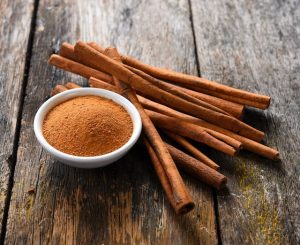 had a taste, peppermint, lavender, orange peels… with so many flavourful herbs to choose from certainly I could make some tea and take myself on a Tea-cation if these big stores couldn’t help me. While I love the taste of peppermint I discovered there were not many other herbs that would really make the tea taste strong enough AND I was not able to achieve the layers of flavour that they could with their “natural flavours”. Naturally (puns always intended) I was distraught. There is only so much Hibiscus a girl can drink. This is when I started adding essential oils and extracts to my teas although it certainly isn’t necessary… Really helped with the withdrawal from Smeevana which has now gone out of business 🙁
had a taste, peppermint, lavender, orange peels… with so many flavourful herbs to choose from certainly I could make some tea and take myself on a Tea-cation if these big stores couldn’t help me. While I love the taste of peppermint I discovered there were not many other herbs that would really make the tea taste strong enough AND I was not able to achieve the layers of flavour that they could with their “natural flavours”. Naturally (puns always intended) I was distraught. There is only so much Hibiscus a girl can drink. This is when I started adding essential oils and extracts to my teas although it certainly isn’t necessary… Really helped with the withdrawal from Smeevana which has now gone out of business 🙁
At the same time as my tea experiments were taking place I was participating in some other experiments. We were working on developing a kids’ yogurt. We wanted it nut free for schools, balanced in omega 3 and 6 fats and featuring cool colours and flavours for kids. I started experimenting with essential oils and Medicine Flower extracts along with freeze dried fruits. We had to use the freeze dried stuff so that we wouldn’t have to pulverize and cook the fresh fruit to death. I thought I had come up with something really great. When I approached my partner with the recipe he came back with the worst news ever: If we were going to use pure extracts or essential oils in our products…. WE WOULD HAVE TO LABEL THEM “NATURAL FLAVOURS”!!! We are literally still trying to figure out whether we could put “natural flavours (essential oil of …)”, whether we would get in trouble and whether there is enough room on the label. These ingredient words on labels are seriously tightly monitored, like the nutrition facts, and it’s not usually in our favour as consumers.
Working up a bit of a sweat writing this…
How could something as fantastic as orange essential oil be lumped under the same overarching umbrella category as:
Aspartame
MSG
Beaver anal secretions
Other animal products
So now I ask for your help: I don’t have time to phone every single company, every single tea store and manufacturer of energy bars. Truthfully I don’t really eat stuff in packages. But I do think we all have a right to know. Let us courageously phone people up and ask them “what exactly are you using for natural flavours?” and make our buying decisions accordingly. Let’s support companies using CO2 extracts as natural flavours and unsupport companies using beaver butt?
If you know something whether it be good bad or ugly, post it in the comments below so we can make choices together.
Read more

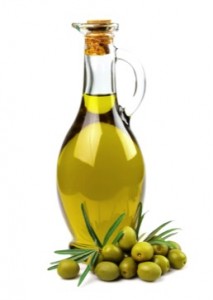
 can be a bit trickier because some sweet things are sweeter than others but you can always substitute one for another as long as you are tasting. For example I don’t like to use Agave. When I see this in a recipe I read “Yacon” or “Stevia and water” or “Luo Han syrup”. You can also use whole foods like dates or bananas to sweeten and then you won’t be using as many processed ingredients if that is your goal. You can make up for lost liquid in a recipe after substituting sweeteners by adding water to make up the difference. Do not be afraid to substitute sweeteners even though it may change the recipe. You will totally have success.
can be a bit trickier because some sweet things are sweeter than others but you can always substitute one for another as long as you are tasting. For example I don’t like to use Agave. When I see this in a recipe I read “Yacon” or “Stevia and water” or “Luo Han syrup”. You can also use whole foods like dates or bananas to sweeten and then you won’t be using as many processed ingredients if that is your goal. You can make up for lost liquid in a recipe after substituting sweeteners by adding water to make up the difference. Do not be afraid to substitute sweeteners even though it may change the recipe. You will totally have success.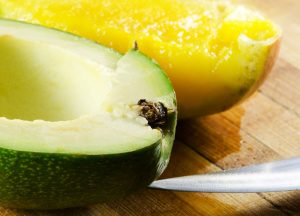 may come as oils or butters. One question that comes up often is whether coconut oil and coconut butter are interchangeable. I think butters are interchangeable with other butters most of the time. Coconut butter is made out of the whole coconut meat just like almond butter is made from whole almonds. It does not become liquid when melted. I love coconut butter. It is one of my indulgences…. So when I run out I know I can substitute almond butter, hazelnut butter, sunflower butter or even avocado in a recipe depending on the flavour that I want. The only oils I have on hand with any sort of regularity are hemp, flax and coconut so depending on which flavour I am ok with I exchange those for whatever the recipe calls for.
may come as oils or butters. One question that comes up often is whether coconut oil and coconut butter are interchangeable. I think butters are interchangeable with other butters most of the time. Coconut butter is made out of the whole coconut meat just like almond butter is made from whole almonds. It does not become liquid when melted. I love coconut butter. It is one of my indulgences…. So when I run out I know I can substitute almond butter, hazelnut butter, sunflower butter or even avocado in a recipe depending on the flavour that I want. The only oils I have on hand with any sort of regularity are hemp, flax and coconut so depending on which flavour I am ok with I exchange those for whatever the recipe calls for.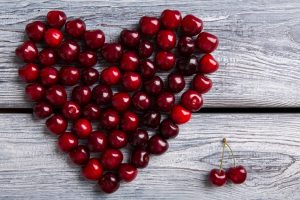




 toilets, money, relationships and more things in the external world. I rarely think of physical activities and digestive stress as “stress” however these are some of the most common stressors that we encounter in our environment. Just as our bodies respond to chronic ongoing worldly stress through raising our cortisol levels we also raise our cortisol levels just the same to respond to digestive stress. Cheetos and coffee cause digestive stress. Our bodies raise cortisol as a result. I am in no way saying not to eat these things here but it is good to know what is going on.
toilets, money, relationships and more things in the external world. I rarely think of physical activities and digestive stress as “stress” however these are some of the most common stressors that we encounter in our environment. Just as our bodies respond to chronic ongoing worldly stress through raising our cortisol levels we also raise our cortisol levels just the same to respond to digestive stress. Cheetos and coffee cause digestive stress. Our bodies raise cortisol as a result. I am in no way saying not to eat these things here but it is good to know what is going on. naturally and it also declines as an adaptive response to a diet high in acidic liquids such as soda and empty calorie foods that leave us without the nutrients necessary to create stomach acid well. Different foods are digested differently in our mouths and stomachs. The proteins after chewing, need our stomach acid and pancreatic enzymes to be healthy in order to be broken down to amino acids well. Amino acids are used in our bodies for enzyme production, cellular energy, red blood cell production, neurotransmitter and hormone production as well as many many other functions. Muscle building is only one small but important function of these amino acids.
naturally and it also declines as an adaptive response to a diet high in acidic liquids such as soda and empty calorie foods that leave us without the nutrients necessary to create stomach acid well. Different foods are digested differently in our mouths and stomachs. The proteins after chewing, need our stomach acid and pancreatic enzymes to be healthy in order to be broken down to amino acids well. Amino acids are used in our bodies for enzyme production, cellular energy, red blood cell production, neurotransmitter and hormone production as well as many many other functions. Muscle building is only one small but important function of these amino acids.
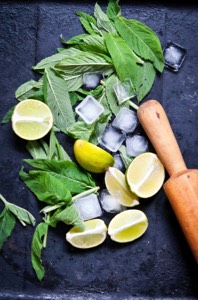
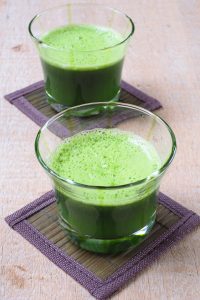 myself for next time. Juicing, especially green juicing, requires a significant investment of time and money for most of us and those are two things we try to save unless there is a really good reason. My really good reason for juicing is my son; when my joints don’t hurt I give better hugs; when my energy is increased I’m a lot more fun. What’s your reason? Take some time to get really clear and keep on digging until you find that
myself for next time. Juicing, especially green juicing, requires a significant investment of time and money for most of us and those are two things we try to save unless there is a really good reason. My really good reason for juicing is my son; when my joints don’t hurt I give better hugs; when my energy is increased I’m a lot more fun. What’s your reason? Take some time to get really clear and keep on digging until you find that 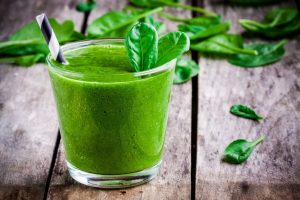 would prefer it without the pulp and without any apple but I think it would be better to follow through with drinking the juice regardless of its imperfections than to allow myself to get overwhelmed and give up. This week I drank juices that weren’t ideal but still had fantastic results. Is there anything you can let go of that would allow you to follow through with juicing?
would prefer it without the pulp and without any apple but I think it would be better to follow through with drinking the juice regardless of its imperfections than to allow myself to get overwhelmed and give up. This week I drank juices that weren’t ideal but still had fantastic results. Is there anything you can let go of that would allow you to follow through with juicing?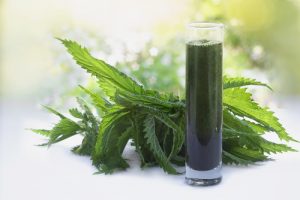 someone comments that it looks disgusting and how could you drink that. Say something humorous to diffuse the situation tell them it gives you superpowers or you can see in the dark or you glow in the dark but don’t get on the defensive or agree with them or tell them “it’s not that bad actually” because that is ultimately not helping you at all. I know it doesn’t help me. Onto strategy number four.
someone comments that it looks disgusting and how could you drink that. Say something humorous to diffuse the situation tell them it gives you superpowers or you can see in the dark or you glow in the dark but don’t get on the defensive or agree with them or tell them “it’s not that bad actually” because that is ultimately not helping you at all. I know it doesn’t help me. Onto strategy number four.



